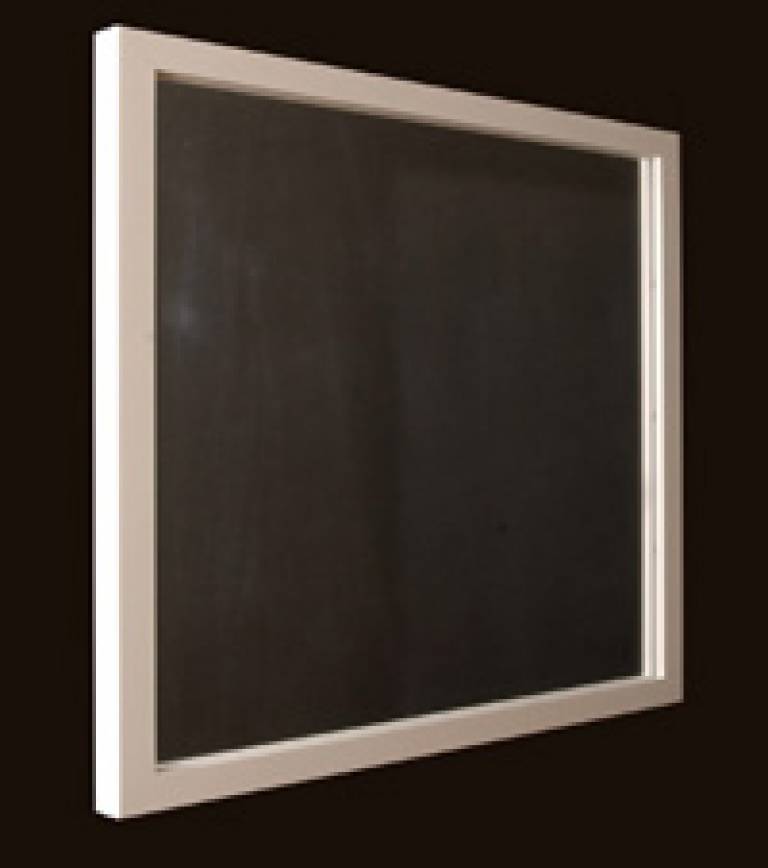Art meets science
13 March 2007
Researchers from UCL's Bartlett School of Graduate Studies have lent their expertise to award-winning artist Angela Palmer.
 The result is the artwork, 'See No Evil', which consists of two perspex sheets sandwiched together to contain 297 dust mites.
The result is the artwork, 'See No Evil', which consists of two perspex sheets sandwiched together to contain 297 dust mites.
The artwork, which has now been donated to the UCL Bartlett, was created for Asthma UK's 'Deep Inspiration' exhibition designed for emerging artists, and based around the theme of breath and breathing with particular reference to the difficulties asthma sufferers face. Dust mites greatly exacerbate asthma and in order to learn about the latest research on dust mites, Palmer contacted Professor Tadj Oreszczyn and Marcella Ucci from the UCL Bartlett.
The duo have been conducting research into energy-efficient and socially acceptable ways of achieving mite control, in order to limit mite-related conditions such as asthma. The EPSRC-funded research has been conducted in partnership with the University of Cambridge, Kingston University, the Royal Agricultural College - who provided the dust mites - and the Medical Entomology Centre.
Palmer, whose work is currently on show at the Royal College of Surgeons, explained: "For this installation, I want to emphasise the very invisibility of this dangerous enemy, to stress the dust mites' powerful and potent armour - their cloak of concealment. I have taken two sheets of transparent perspex and carefully and meticulously sandwiched exactly 297 dust mites between the sheets. This is a symbolic number as it represents the average number of mites there are per gram of dust."
'See No Evil' won the Polly Campbell award, set up by Asthma UK to reward emerging artists whose work was felt to contain an original insight into the world of asthma. The award is in memory of Polly Campbell who died suddenly of asthma in 2003, a few weeks short of her tenth birthday.
The research team, led by Professor Tadj Oreszczyn (UCL Bartlett), has been investigating the effects of housing design and occupant behaviour on dust mite levels in beds. The recently completed two-year study follows on from a previous project by the school that developed a model for predicting dust mite population growth in beds, based on environmental factors such as heat and moisture. The model shows that building design and occupant behaviour can greatly affect mite infestations in housing.
Marcella Ucci (UCL Bartlett), a researcher on the project explained: "Inhaled allergens derived from house dust mite faeces play a major role in allergic disease, especially in asthma. The number of people affected is rising throughout Europe, impairing the health and quality of life of a substantial proportion of children, as well as many adults."
To find out more about the research and Angela Palmer's exhibition, use the links at the bottom of this article.
Image: 'See No Evil', Angela Palmer
 Close
Close

